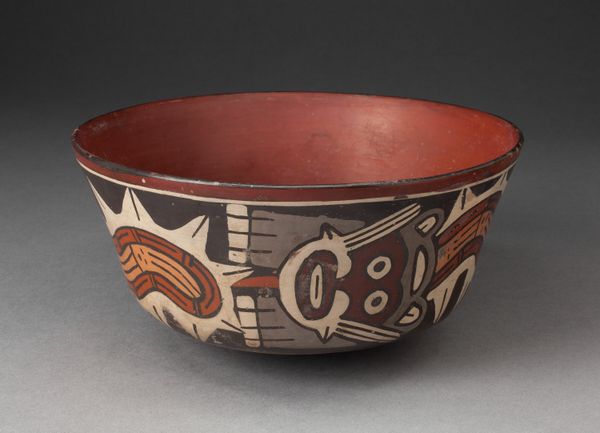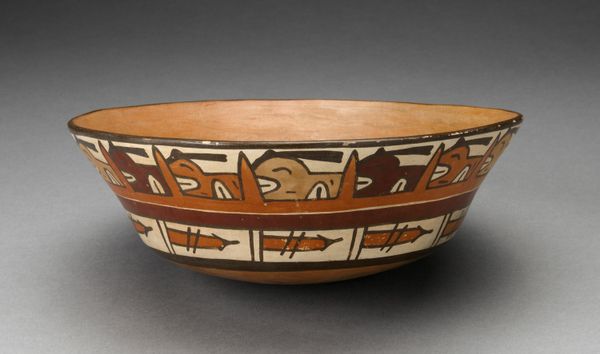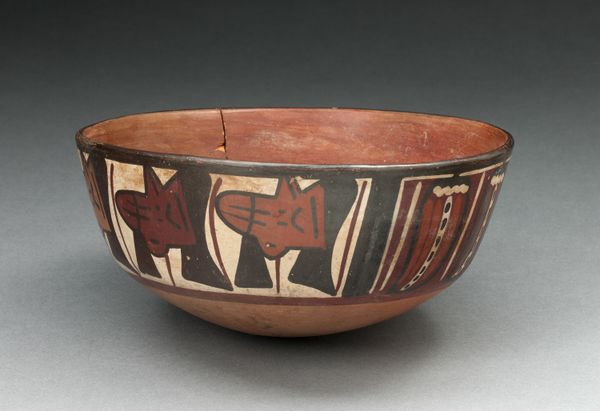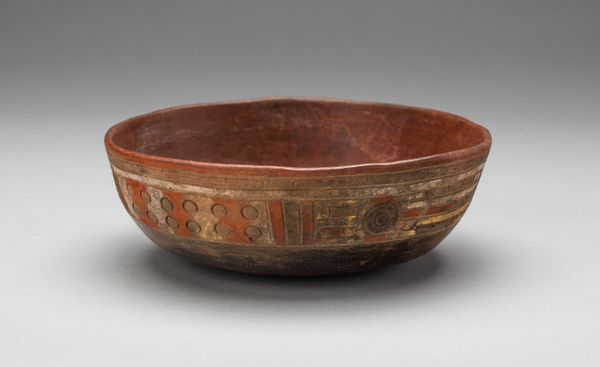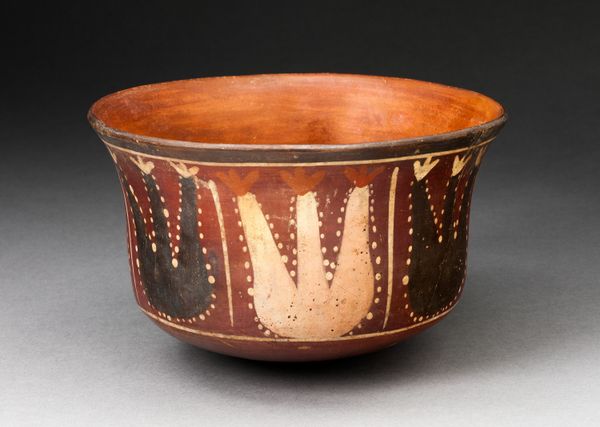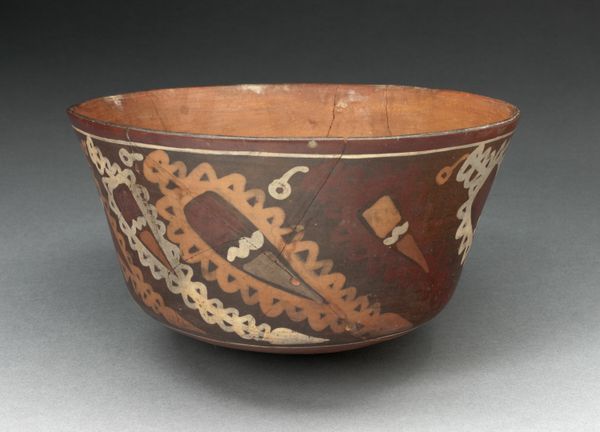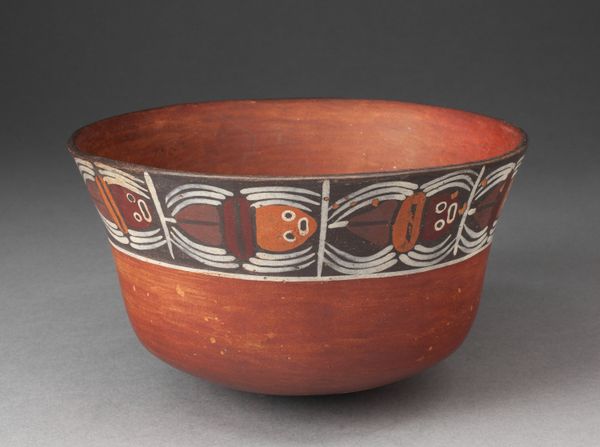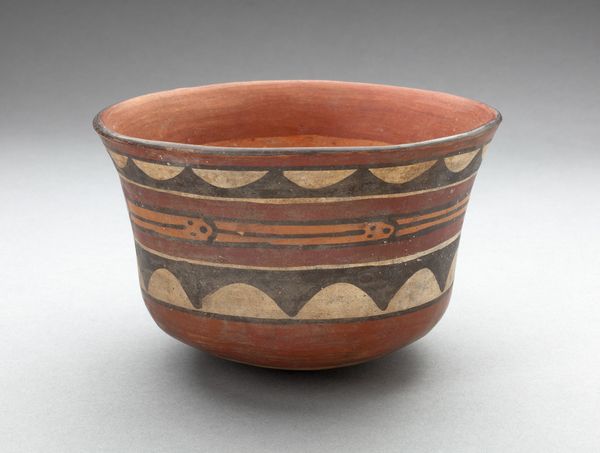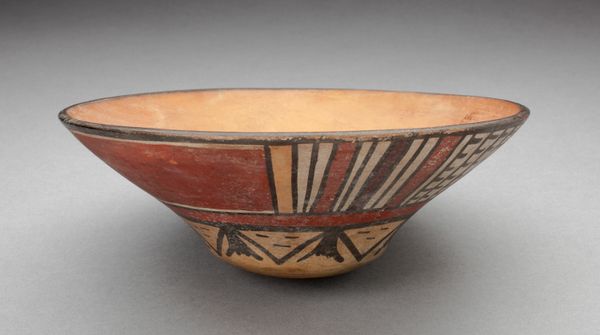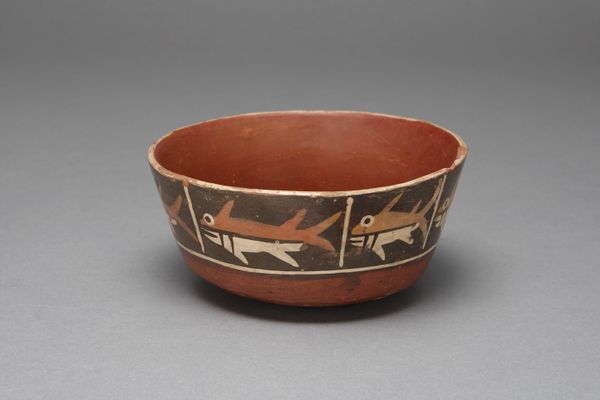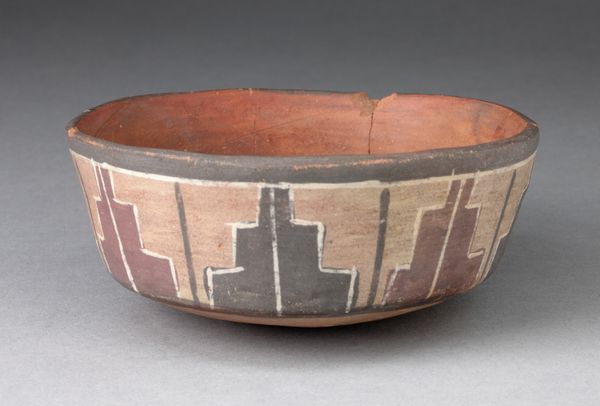
Jar Cover Depicting Costumed Figure with Bird Attributes c. 180 - 500
0:00
0:00
ceramic, earthenware
#
ceramic
#
figuration
#
earthenware
#
ceramic
#
indigenous-americas
Dimensions: 4.8 × 14.6 cm (1 7/8 × 5 3/4 in.)
Copyright: Public Domain
Curator: Before us is a ceramic jar cover created by the Nazca people, sometime between 180 and 500 CE. It’s entitled "Jar Cover Depicting Costumed Figure with Bird Attributes" and resides here at The Art Institute of Chicago. Editor: My initial impression is one of ritual. The geometric forms and repeated motifs have a somber quality; yet, I'm curious about its original function beyond simple containment. Curator: The Nazca civilization flourished in the arid coastal region of Peru, and their art is intrinsically linked to their environment and belief systems. Vessels like this one would likely have been used in ceremonies or as offerings. Editor: It is fascinating to think of the labor invested into its creation and also what paints the artisan would have utilized to achieve this vibrant palette given its materials. And what kind of communal workshops would exist where art pieces such as these were being commissioned or used? Curator: Precisely. The iconography hints at complex mythologies and social hierarchies. The figure depicted, adorned with bird attributes, probably signifies a shaman or a person of elevated status within the community. Birds often symbolized connections to the supernatural realm. Editor: The vessel speaks volumes about their social values and power structures, yet also of the Nazca’s relationship to craft production, highlighting local resources and technical skills used in creating these stunning ceramic objects, what kind of cultural transmission happened in such places? Curator: These details emphasize a crucial aspect: artistic expression served a public role, communicating cultural narratives, solidifying identities, and legitimizing authority through the display of elaborated vessels, whether during life or through funerary goods. Editor: Reflecting on the object itself, I'm struck by how tangible it is. The way the makers were engaged in shaping its reality and creating this moment that connects to the beyond is profound to me. It's this blend of practical utility, rich materiality and powerful symbolism that I find deeply moving. Curator: Agreed. Examining pieces like this is not only an encounter with historical artistry, it is also the study of ourselves as human beings.
Comments
No comments
Be the first to comment and join the conversation on the ultimate creative platform.
